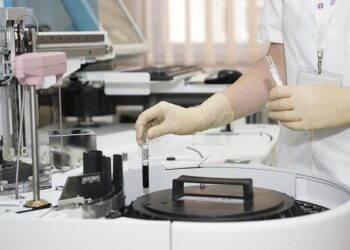Transforming Education in Bosnia and Herzegovina: Pioneering Inclusive and Quality Learning Reforms
Bosnia and Herzegovina is undertaking a significant overhaul of its education system, focusing on inclusivity and enhancing the overall quality of learning across the nation. Backed by the Council of Europe alongside various international collaborators, these reform efforts strive to close educational disparities, guaranteeing equal opportunities for students from all socio-economic statuses and cultural backgrounds. In today’s fast-evolving global landscape—where adaptability and critical thinking are paramount—this initiative aims to equip young learners with skills essential for thriving in the 21st century. Anchored in sustainable development objectives, Bosnia and Herzegovina is set to redefine its educational landscape for the benefit of both students and educators.
A United Approach: Driving Systemic Change Across Bosnia’s Education Sector
Recently, key stakeholders from across Bosnia and Herzegovina convened to chart a comprehensive reform agenda addressing long-standing inequalities within the education system. This collaborative effort integrates modern pedagogical methods tailored specifically to meet the needs of diverse student groups—from ethnic minorities to children with disabilities—ensuring no learner is left behind.
The core pillars guiding this transformation include:
- Curriculum Revitalization: Developing curricula that nurture creativity, analytical reasoning, and effective problem-solving skills aligned with contemporary demands.
- Ongoing Professional Development: Implementing continuous training programs that empower teachers with inclusive teaching strategies.
- Fair Resource Allocation: Ensuring equitable distribution of learning materials and digital technologies between urban centers and rural communities alike.
Acknowledging challenges faced by marginalized populations—including economically disadvantaged families—the reform roadmap emphasizes measurable outcomes supported by robust data collection systems.
| Focus Area | Expected Outcome |
|---|---|
| Inclusive Policy Development | Create classrooms where every student actively participates |
| Multi-Sector Collaboration | Strengthen partnerships among education authorities, social services, & community organizations |
| Efficacy Monitoring Systems | Sustain improvements through evidence-based feedback mechanisms |
Strategies for Cultivating Inclusive & Effective Educational Settings
The blueprint for reform highlights several strategic components designed to foster adaptable learning environments responsive to individual differences:
- Diverse Curriculum Frameworks: Introducing flexible models that accommodate varied cognitive approaches while promoting lifelong learning habits.
- < strong >Empowering Educators Through Technology:< / strong > Providing specialized training on inclusive instructional methods enhanced by emerging digital tools such as interactive platforms or AI-driven resources.< / li >
 - < strong >Community Engagement Initiatives:< / strong > Actively involving parents along with local stakeholders in school decision-making processes encourages shared accountability toward student achievement.< / li >
 - < strong >Transparent Resource Management:< / strong > Allocating budgets openly ensures all schools receive sufficient support regardless of their geographic location.< / li >
The success of these initiatives hinges on seamless cooperation between government bodies at multiple levels alongside civil society organizations dedicated to equity-focused policies. The table below outlines priority areas paired with concrete actions essential for effective execution:
Pillar Focus Area Catalytic Actions Required Adequate Accessibility Features
(e.g., ramps & assistive devices)< td >Upgrade infrastructure ensuring barrier-free access especially benefiting students with disabilities .< / td >< tr >< td >Culturally Responsive Content
(multimedia & multilingual materials)< td >Develop & distribute educational resources reflecting diverse cultural identities .< / td >< tr >< td >Policy Implementation
Establish clear guidelines mandating inclusion at institutional levels.
< td >Deploy monitoring frameworks guaranteeing compliance throughout schools.Strengthening Teacher Training Programs & Student Support Mechanisms: Pathways Toward Success
To meet evolving classroom dynamics effectively requires targeted measures such as:
- < strong >Continuous Professional Learning :< / strong > Host regular workshops introducing innovative pedagogies combined with integration of advanced technologies like AI-powered tutoring systems.
- < strong >Mentorship Programs :< / strong > Connect novice educators with experienced mentors fostering collaborative knowledge sharing.
- < strong >Inclusive Teaching Methodologies Training :< / strong > Offer specialized courses emphasizing differentiated instruction techniques suited for heterogeneous classrooms.
Complementary support structures play an equally vital role in nurturing well-rounded student development:
- < strong>Mental Health Accessibility : Provide confidential counseling services addressing emotional well-being—a factor linked closely to academic success (according to WHO data indicating nearly one-fifth of youth worldwide experience mental health issues). &Nbsp;&Nbsp;&Nbsp;&NbSpTailor academic assistance programs targeting individual skill gaps thereby boosting overall performance.& NbSp;&Nbsp;&NbSpEncourage active family participation through workshops plus ongoing communication channels strengthening home-school collaboration.& NbSp;Conclusion: Bosnia and Herzegovina’s Educational Transformation Sets a Regional Benchmark
The unwavering commitment demonstrated by Bosnian policymakers towards holistic reforms marks an encouraging milestone aimed at building an equitable schooling environment where every learner can thrive regardless of background or circumstance. By embedding inclusivity into foundational policies while elevating academic standards through innovative practices—and fostering dynamic partnerships among government agencies , educators , families ,and communities —the nation charts a promising course toward sustainable excellence in education.
As Bosnia advances along this ambitious trajectory , it not only expands domestic opportunities but also emerges as a regional leader capable of inspiring similar progressive changes elsewhere confronting comparable challenges .
International observers watch keenly , hopeful that these forward-thinking reforms will empower future generations—not only academically but socially—to contribute meaningfully within increasingly interconnected global societies .
ADVERTISEMENT















